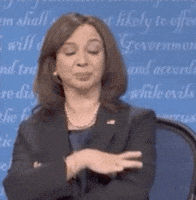lawtig02
Legend of ZZL
- Messages
- 5,378
Just as a reminder for our red-feathered friends --

 doggett.house.gov
doggett.house.gov
Trump’s Economic Promises Timeline
| 8/9/24: | “Starting on day one, we will end inflation and make America affordable again, to bring down the prices of all goods.” NBC Montana, Trump Rally in Bozeman, MT, YouTube (August 9, 2024). |
| 8/14/24 | “Under my administration, we will be slashing energy and electricity prices by half within 12 months, at a maximum 18 months” “Prices will come down. You just watch: They’ll come down, and they’ll come down fast, not only with insurance, with everything.” PBS NewsHour, Trump Rally in North Carolina, YouTube (August 14, 2024). |
| 8/17/24 | “Starting the day I take the oath of office, I will rapidly drive prices down and we will make America affordable again. We’re going to make it affordable again.” “We’re going to get your energy prices down. We’re going to get your energy prices down by 50%.” PBS NewsHour, Trump speaks at campaign rally in Wilkes-Barre, Pennsylvania, YouTube (August 17, 2024). |
| 9/5/24 | @ 10:56 “We will bring our auto-making industry to the record levels of 37 years ago, and we’ll be able to do it very quickly through tariffs and other smart use of certain things that we have that other countries don't.” @ 18:05 “Energy is going to bring us back. That means we’re going down and getting gasoline below $2 a gallon, bring down the price of everything from electricity rates to groceries, airfares, and housing costs.” @ 48:04 “We will eliminate regulations that drive up housing costs with the goal of cutting the cost of a new home in half. We think we can do that.” NBC News, Trump Addresses Economic Club Of New York, YouTube (September 5, 2024). |
| 9/18/24 | “While working Americans catch up, we’re going to put a temporary cap on credit card interest rates. We can’t let them make 25 and 30%.” Former President Trump Campaigns in Uniondale, New York, C-SPAN (September 18, 2024). |
| 9/29/24 | “We're going to get the prices down. We have to get them down. It's too much. Groceries, cars, everything. We're going to get the prices down. While working Americans catch up, we are going to put a temporary cap on credit card interest rates at 10%. People are being made to pay 25%. Temporary ban.” Speech: Donald Trump Holds a Campaign Rally in Erie, Pennsylvania, Roll Call (September 29, 2024). |
| 10/1/24: | “Starting on day one, we will end inflation and make America affordable again. We’ll do that. We’ve got to bring it down.” PBS NewsHour, Trump delivers campaign remarks in Waunakee as vice presidential debate set to begin, YouTube (October 1, 2024). |
| 11/04/24 | “A vote for Trump means your groceries will be cheaper” Former President Trump Campaigns in Pittsburgh, C-SPAN (November 4, 2024). |
| 12/12/24 | “I can’t guarantee anything. I can’t guarantee tomorrow” Time Staff, Read the Full Transcript of Donald Trump’s 2024 Person of the Year Interview With TIME, TIME (December 12, 2024). |
| 1/5/25 | “We must secure our border, unleash American energy, and renew the Trump tax cuts, which were the largest in history, but we will make it even better - There will be no tax on tips. It will all be made up with tariffs, and much more, from countries that have taken advantage of the U.S. for years.” Donald J. Trump (@realDonaldTrump), X (January 5, 2025, 9:11PM). |
| 1/7/25 | “We’re going to have prices down- I think you’re going to see some pretty drastic price reductions.” Associated Press, Trump holds a press conference at Mar-a-Lago, YouTube (January 7, 2025). |






